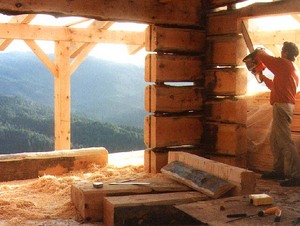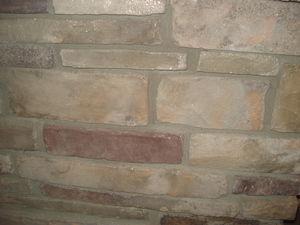Wainscoting is an architectural feature that has experienced resurgence in recent years. No longer a feature primarily found in Victorian homes, these wooden panels that cover only the lower part of a wall can offer a sense of luxury and elegance. If you have some basic home improvement knowledge, consider installing wainscoting yourself to add a new look to your home.
Before you begin your project, decide how tall you would like the wainscoting to be. Panels are often standardized sizes; 4 x 8 ft sheets are the most common. You must also figure the trim on the edges of the wainscoting to figure the overall height in the room. Although 45″ is a common height, do not be afraid to play with a higher or lower panel size to emphasize the overall scale of the room.
When choosing wainscoting, decide whether or not you want a prefinished or ready to finish panel. Although prefinished wood panels require less work, for a professional job the ready to finish option offers a better finish and the opportunity to color match. The type of finish will help you determine the type of wood required. A beautiful hardwood can be finished with a few clear coats, while cheaper wood may require paint to appear to its best advantage.
You should also decide how you will install the paneling. You can use paneling nails or adhesive to attach the panels to the ground. For this guide, we use wood paneling nails. Adhesive, though easy to use, can be difficult to remove should you ever change your mind.
Before beginning, remove all baseboards, outlet covers, and anything else attached to the walls of your room. Remove all other items within the room as much is possible to allow yourself space to work.
Next locate the studs beneath the walls. When you have found them, make a mark on the floor that indicates where they begin. The mark should be small and easily covered when the baseboards are reinstalled. This way you can easily attach the paneling to the studs by looking at the marks and working up.
Measure the desired height from the floor and make a mark on the wall. Keep in mind that the top rail will raise the height, but you only want a mark to help hang the paneling. Because a floor is seldom level, use a carpenter’s level to draw a line around the perimeter of the room. Take your time to do this correctly; the line will be your guide in the next step.
Begin attaching wood paneling by starting in a corner. Do not install the vertical edge flush with the corner; instead leave a 1/16″ gap. Start with the nearest stud, and carefully working your way up from the bottom, attach the panel to stud. When you attach the next piece, leave a 1/16″ gap to allow for inevitable expansions and contractions.
You may also have to cut out a hole in the wood panel to allow for an electrical outlet or light switch. Measure carefully before cutting, and keep in mind that the electrical box may have to be moved outwards slightly to accommodate the increased wall depth. Ask an electrician to do this work if you have never done electrical work.
When all the wood panels are installed, caulk in between the panel gaps. Use a caulk made for use with wood, and make sure it can easily be refinished. Reinstall your top rail and baseboards.
Now carefully set each nail and putty the resulting hole. Sand any rough areas as needed and clean off the wainscoting with a soft cloth. Now you can refinish the wainscoting and trim to match.







